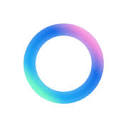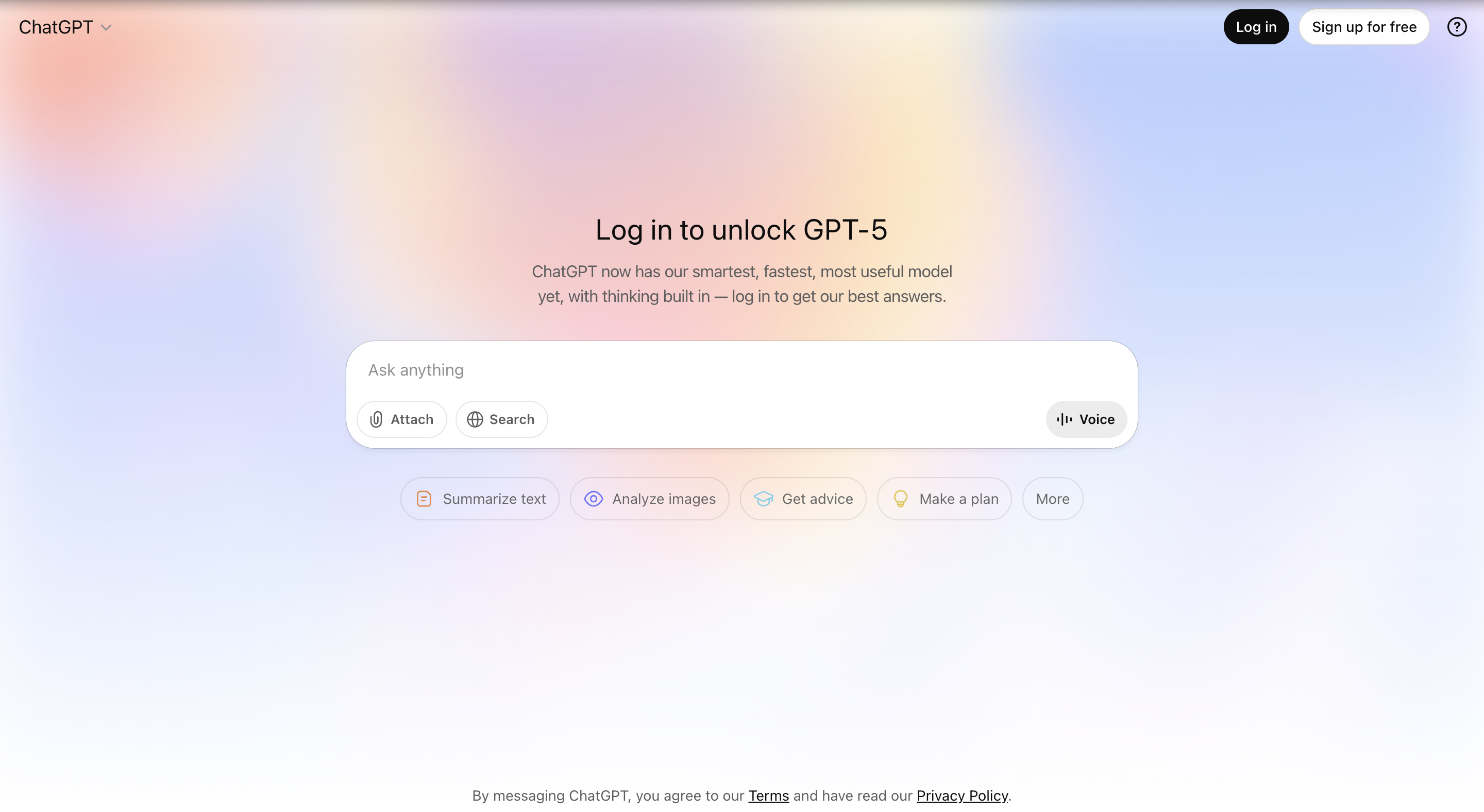ChatGPT is an advanced chatbot developed by OpenAI. Based on the powerful GPT (Generative Pre-trained Transformer) architecture, it can understand and generate human-like text, engage in natural and fluent conversations, answer questions, compose articles, write code, and perform various language-based tasks. Pre-trained on massive amounts of text data and optimized using reinforcement learning with human feedback (RLHF), ChatGPT is adaptable to a variety of application scenarios, including intelligent customer service, content creation, and educational assistance. Despite its powerful capabilities, ChatGPT has limitations, such as knowledge cutoffs and the potential for misinformation. Its development is also accompanied by ethical and social considerations.
What is ChatGPT
ChatGPT, short for Chat Generative Pre-trained Transformer, is an advanced AI chatbot developed and released by OpenAI, a US artificial intelligence research company. Essentially a Large Language Model (LLM) , it is pre-trained on massive amounts of text data to learn language patterns and statistical regularities. It can understand user input and generate coherent, relevant, and natural text responses. Unlike traditional chatbots that rely on rules or simple search, ChatGPT achieves a deeper level of semantic understanding, enabling multi-round interactions based on the context of the conversation, providing a conversational experience closer to that of a human.
Who developed ChatGPT?
ChatGPT’s development builds on OpenAI’s years of expertise in natural language processing, particularly its ongoing exploration and innovation in the GPT architecture . Initially fine-tuned based on the GPT-3.5 series of models , subsequent versions have adopted more advanced model architectures, such as GPT-4 . Through continuous research and iteration, OpenAI has enabled ChatGPT to excel in multiple natural language processing tasks, including dialogue generation, text summarization, code writing, and question answering.
Names and Meanings: Chat and GPT
The word ” Chat ,” meaning “chat” or “dialogue,” directly identifies the product’s primary form of interaction and application scenario: a chatbot capable of engaging in natural language conversations with users. It emphasizes the model’s ability to understand and generate conversations, providing a smooth, coherent, and logical communication experience that makes users feel like they are conversing with an intelligent companion.“ GPT ” is the abbreviation of “ Generative Pre-trained Transformer ”, which summarizes the key technical characteristics of the model.
-
Generative : This indicates the model’s ability to generate text. This goes beyond simply retrieving or matching existing information; rather, it creates entirely new, grammatically and logically accurate text based on learned linguistic patterns and contextual information. This enables ChatGPT to accomplish a variety of creative tasks, such as writing articles, coding, and composing poetry.
-
Pre-trained : This refers to a model that has been pre-trained on a large amount of unlabeled text data. Through this process, the model automatically learns the structure, grammar, semantics, and world knowledge of the language, acquiring rich language understanding and generation capabilities. This enables the model to perform well on downstream tasks, even with little or no labeled data.
-
Transformer : A deep learning model architecture proposed by Google in 2017, it has achieved tremendous success in natural language processing. The core of the Transformer architecture is the self-attention mechanism , which effectively captures long-range dependencies in text sequences and processes input data in parallel, significantly improving the model’s efficiency and effectiveness in processing long texts and complex language structures.

ChatGPT’s main features
- Natural language conversation : Able to have fluent conversations with users, understand and generate various natural language texts, suitable for daily chat, emotional support, etc.
- Text generation and creation : Generate creative content such as articles, stories, poems, etc. based on user prompts, and even imitate specific writing styles.
- Translation and language learning : Supports multi-language translation, provides grammar explanations and vocabulary learning assistance to help users learn new languages.
- Knowledge Quiz : Answer knowledge questions covering various subjects such as history, science, technology, etc., although they may be limited by the latest information.
- Code Programming and Debugging : Provide programming assistance, answer programming questions, write code, debug, and explain concepts in different programming languages.
- Information summary and distillation : It can summarize long articles or complex information to help users quickly extract key information.
- Emotional and psychological support : Provide emotional support and daily psychological comfort. Although it does not replace professional consultation, it can provide users with companionship and advice.
- Creative design and visual generation : Use image generation tools to create visual content such as illustrations and posters based on user descriptions.
- Personalized recommendations and planning : Provide personalized travel, study, career, and other recommendations based on users’ interests and goals.
- Daily life assistant : helps arrange schedules, reminders, recommend recipes, organize shopping lists, etc. to facilitate users’ daily lives.
How ChatGPT works
ChatGPT’s workflow can be summarized as a complex, multi-stage intelligent text generation process. It begins with user input, progresses through the model’s internal understanding, reasoning, and generation mechanisms, and ultimately outputs a coherent and relevant text response. While this process appears instantaneous to the user, it involves the model’s learning from massive amounts of data and understanding the current conversation context.
-
Input processing and encoding : When a user enters a piece of text (such as a question or a conversation), ChatGPT first preprocesses the text, including tokenization (segmenting the text into words or subword units) and converting it into numerical representations (word vectors or tag IDs) that the model can understand. These numerical representations are then fed into the encoder portion of the model (if the model is an encoder-decoder structure, or directly into the stacked layers of the Transformer). In each layer of the Transformer, the self-attention mechanism analyzes the relationships between the various parts of the input sequence, extracts key information, and constructs a deep semantic representation of the input text. This representation captures the meaning of the input, the context, and the user’s underlying intent.
-
Contextual Understanding and Memory : For multi-round conversations, ChatGPT leverages the unique features of its Transformer architecture to understand and remember the context of the conversation. It takes the user input of the current round and the conversation history of previous rounds (possibly truncated or summarized to fit the model’s maximum input length) as input, or incorporates historical information into the current processing through some mechanism. This enables the model to generate more coherent and relevant responses based on previous exchanges, rather than simply responding to the current input in isolation. This in-context learning capability is key to ChatGPT’s smooth multi-round conversations.
-
Text generation (decoding) : After understanding the user input and the conversation context, the model enters the text generation phase. It is an autoregressive process, meaning that the model generates an output sequence token by token . At each step, the model predicts the next most likely token based on the generated text and the encoded input information. This process involves selecting a word with the highest probability from the model’s vocabulary, or introducing a certain amount of randomness through sampling strategies (such as kernel sampling or temperature sampling) to generate more varied and creative text. The decoder part of the Transformer (or the Transformer layer of the generation part) is responsible for performing this task. It uses the self-attention mechanism to focus on the generated part and the encoder-decoder attention mechanism (if applicable) to focus on the input information.
-
Output and Iteration : The generated text tokens are converted back into human-readable text and presented to the user. If the user continues the conversation, the entire process iterates, with new user input processed by the model along with previous conversation history, forming a continuous exchange. During the generation process, the model is subject to certain constraints, such as maximum generation length and repetition penalties, to ensure the quality and rationality of the output. The reward model and policy model trained through RLHF also influence the generated content in the background, making it more consistent with human preferences.
How to use ChatGPT
-
Register an account : Visit ChatGPT’s official website: https://chatgpt.com, click the “Register” button, and fill in your email address and password to complete the account registration. Once registered, log in to your account to access the ChatGPT user interface.
-
Select a usage mode : Choose the appropriate usage mode based on your needs. For simple conversations, you can directly enter questions or topics in the dialog box. If you need to perform specific functions such as text generation or code generation, you can view the function options in the interface and select them.
-
Input : Enter the question you want to ask or the content you want to generate in the dialog box. Try to express your intention clearly and accurately when typing. This will help ChatGPT better understand and give an accurate answer or generate content that meets your requirements.
-
Review answers or generated results : After entering your content, click the Send button. ChatGPT will process your input and generate an answer or generated results. You can carefully review the generated content to determine if it meets your needs.
-
Adjustment and optimization : If the generated results do not meet your expectations, you can adjust and optimize the input content according to the prompts provided by ChatGPT and resend the request to obtain more accurate results.
-
Save and use : For valuable content generated, you can choose to save it for later use.
ChatGPT’s product pricing
- Free is suitable for basic users and provides limited AI features and access.
- Plus (Enhanced Edition) is $20/month and is suitable for users who need more features and access rights. It provides expanded access rights and some advanced features.
-
Includes all features of the free version
-
Expanded messaging, file upload, data analysis, and image generation limits
-
Standard and advanced voice modes, support for video and screen sharing
-
Access to deep research and multiple inference models (OpenAI o3-mini, OpenAI o3-mini-high, and OpenAI o1)
-
Access a research preview of GPT-4.5 , our largest model yet, and GPT-4.1 for optimized code tasks
-
- Pro (Professional Edition) is $200/month and is suitable for professional users who need the highest access rights and the most advanced features. It provides unlimited access rights and the most advanced features.
-
Contains all the features of the enhanced version
-
Unlimited access to all inference models and GPT-4o
-
Unlimited access to premium voice with higher video and screen sharing limits
-
Access OpenAI’s expert mode, which uses more computing resources to achieve the best answers
-
Extended in-depth research access
-
Expanded Sora video generation access
-
Access Operator’s research preview
-

Application Scenarios of ChatGPT
- Intelligent Customer Service : Leveraging its powerful natural language understanding and generation capabilities, ChatGPT enables more natural conversations with users, accurately understands their intent, and provides personalized, targeted answers and assistance. It can handle a large number of customer inquiries 24/7, quickly respond to customer needs, and reduce customer wait times.
- Marketing content creation : ChatGPT can assist in writing compelling advertising copy, product descriptions, social media posts, blog articles, email marketing content, and more, helping brands communicate more effectively with their target audiences. Marketers can provide key selling points and target demographics, and ChatGPT can generate alternative copy in a variety of styles.
- Media and Publishing : ChatGPT can be used to write first drafts of news reports (especially in data-driven or event-based reporting), article summaries, book outlines, and assist in literary creation, such as generating storylines and character dialogues.
- Education and Training : ChatGPT can serve as a powerful auxiliary tool, providing personalized learning support and rich teaching resources for students, teachers, and self-learners, promoting educational equity and improving learning efficiency to a certain extent. For students, ChatGPT can act as a personalized tutor . Students can ask ChatGPT questions about learning problems. Whether it is understanding mathematical formulas, explaining scientific concepts, sorting out historical events, or solving programming problems, ChatGPT can provide instant and detailed answers and guidance. It can adjust the depth and method of explanation according to the student’s level of understanding, helping students overcome learning obstacles and consolidate their knowledge.
- Programming assistance and code generation : ChatGPT can understand programming requirements expressed in natural language and generate corresponding code snippets, functions, or complete program modules. It can interpret code to help developers understand the functionality and implementation logic of existing code bases, especially for complex or unfamiliar code segments. It can also debug code . When developers encounter errors or bugs, they can provide error information and related code snippets to ChatGPT. The model may then analyze the cause of the error and provide recommended corrections.
- Market Trend Analysis : By analyzing news reports, industry reports, and social media discussions, it helps companies identify emerging market opportunities and potential threats. It can also be used for customer behavior analysis, processing customer reviews, surveys, and interaction records to help companies better understand customer needs, preferences, and pain points, optimizing product design and marketing strategies. To improve operational efficiency, ChatGPT can automatically generate business reports and meeting minutes, and assist with data visualization and dashboard creation.
Advantages and limitations of ChatGPT
Advantage Analysis
- Improve work efficiency and automate tasks : By automating a large number of repetitive and transactional tasks, human resources are freed up to focus on more creative and strategic work. In the workplace, many daily tasks, such as writing and replying to emails, organizing meeting minutes, summarizing information, scheduling, preliminary data analysis, and generating standardized reports, can be completed or assisted by ChatGPT.
- Promoting the sharing and equity of educational resources : Under the traditional education model, high-quality educational resources are often concentrated in a few developed regions or prestigious universities. Students in many regions, especially those in impoverished and remote areas, face difficulties accessing high-quality educational guidance and tutoring. ChatGPT can, to a certain extent, overcome these geographical and resource limitations. Through the internet, any student with access to ChatGPT, regardless of location, can access a “virtual tutor” to ask questions and receive assistance and explanations on course content, homework problems, and study methods.
- Personalized learning experience : Customized explanations and guidance can be provided based on different students’ understanding levels and learning paces to help students overcome learning difficulties and consolidate what they have learned.
- Assisting creativity and stimulating innovation : Its powerful text generation capabilities and vast knowledge base enable it to consider problems from diverse perspectives, proposing novel, sometimes even unexpected, ideas and solutions. When people face creative bottlenecks or need new inspiration, they can describe the problem context, goals, or constraints to ChatGPT. The model then generates a variety of possible creative directions, design concepts, or solution prototypes based on the patterns and connections it has learned.
- Content recommendation and information acquisition : ChatGPT can push more relevant and more suitable content to users based on their reading history, interest tags and search queries.
Limitations and Challenges
- Knowledge cutoff and lack of real-time performance : The ChatGPT model acquires knowledge through pre-training on massive amounts of historical text data. This means that its knowledge base primarily reflects the state of the world and the level of cognition at the time of the training data cutoff. Therefore, ChatGPT may not provide accurate answers to new events, discoveries, policies, or any dynamically changing information that occurs after this date, and may even give incorrect answers based on outdated information.
- Potential misinformation and bias : Models may generate content that sounds plausible but is inaccurate, factually incorrect, or even completely fabricated. This occurs in part because the model generates text based on statistical patterns in its training data and does not truly “understand” the true meaning of the generated content, nor can it conduct fact-checking like humans.
- Lack of true human emotional understanding and empathy : It cannot truly experience joy, anger, sorrow, or happiness, nor deeply understand the complexity and subtlety of human emotions. The “emotional” responses it generates are more based on language patterns and common emotional expressions learned from its training data, rather than genuine feelings.
Relevant Navigation

Code.org AI – AI Education for Beginners & Students

Curipod – AI Presentation Tool for Interactive Lessons

DeepSeek V3: Powerful Open-Source AI Model & API
Wanderboat
Character.AI

